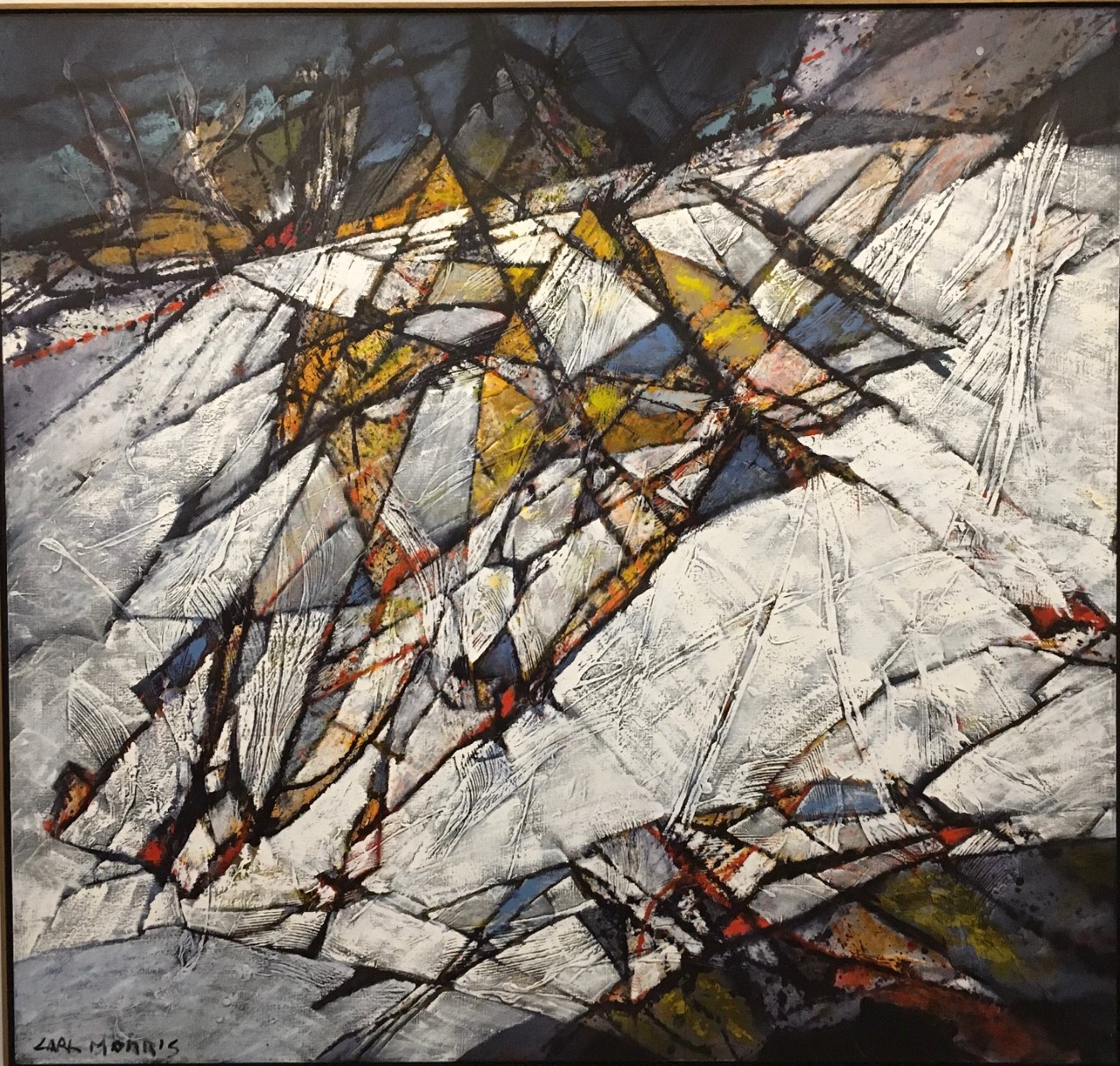Imagine you’re looking at a cloud made of stars. In the cloud, the brightest stars are the four “mystic” painters of the Pacific Northwest: Mark Tobey, Morris Graves, Kenneth Callahan and Guy Anderson. Jacob Lawrence is also in the constellation. And the nimbus of “lesser” lights, contemporaries of the more famous five, during the past century? Who’s to say their works are not as great?
This question is at the heart of the current exhibit at La Conner’s Museum of Northwest Art (MoNA). In “From the Permanent Collection,” curated selections of works by a couple dozen Pacific Northwest artists whose lights have also shined brightly during the past century are featured.
Walter Isaacs and other teachers at the University of Washington were there at the beginning. A fine painter himself, Isaacs encouraged many as a professor of fine arts from 1923 until 1954. Cash value aside, I don’t think I’d prefer a Picasso work to Isaacs’ “Sorceress” (oil on board, 1952). In the work, five colorful figures appear in conversation. A woman in red addresses one in green and brown, who holds her head in surprise. A smaller, or distant, shielded figure turns away. Two green figures look on as though in shock; one raises his hand, tilting back expressively. The colors strongly underline the narrative.
The Cornish School of the Arts has also fostered creativity in Seattle and beyond. Tobey was the first instructor of fine art there, followed by Jay Steensma. The MoNA show displays two of Steensma’s works.
Few were closer to Tobey than his gadfly, Helmi Juvonen. Fascinated by the spiritual beliefs of Northwest native cultures and a friend of tribal leaders, she was a prolific artist in the modern, “over-all style.” MoNA displays four excellent works in this exhibit, including her fascinating “Frogs” (linoleum print, 1960), resembling an aboriginal cave painting. In and out of psychiatric hospitals, Helmi never gave up hope of marrying Tobey and bearing his child, oblivious to the fact that he was gay.

Barbados-born Gwendolyn Knight was acquainted with the artists and poets of the Harlem Renaissance. Married to Jacob Lawrence, she taught alongside him with Josef Albers at Black Mountain College before locating to the Northwest, where her husband taught at the University of Washington. Her etching, “Mask” (printer’s proof, 1964), conveys strong determination in hues of rose and orange, backed by stark black.
A lifelong friend of Tobey, Carl Morris directed the Works Progress Administration (WPA) federal arts program in Spokane in 1938. Subsequently, Morris and his wife, Hilda Grossman, established an art school in their Seattle studio. The powerful abstraction, “Glacial Path” (1990), documents Morris’ standing as a first-generation abstract expressionist. Considered Oregon’s most renowned artist, his art hangs in major museums throughout the United States.
Alden Mason taught at the University of Washington from 1947 to 1981, where he was free to paint prolifically. He’s known for his cartoonish canvases. I love his abstract, colorful squeezed acrylic “Snake in the Garden of Eden,” said to have been inspired by Mexican Huichol Indian yarn paintings.
Richard Gilkey is also a well-known name in Skagit County, where he was born in 1925. He had a reputation as a “temperamental figure,” known for barroom brawls and disputes with gallery owners and — of all people! — art critics. Besides being an artist, he worked as a ranch hand, sailor and logger. His charcoal drawing, “Bird Nest” (1969) appears peaceful — surely those spots on the eggs are not intended to be eyes.
Another contributor, Kathleen Adkinson, was the last surviving artist who trained under Tobey at Cornish College. During her life she enjoyed considerable recognition, including a solo show at the Frye Art Museum in 1960 and inclusion in the 1962 Seattle World’s Fair. Like Jackson Pollock, she painted her canvases on the floor, not only brushing the colors, but dripping paint and splashes of medium on them. A consummate outdoors person, she credits the “insistent energy of nature” as the compelling force in her work.
In any ranking of “greats” in Northwest art, Dale Chihuly is a major figure, a leading innovator in blown and sculpted glass. In 34 states and numerous foreign countries, museums and institutions display his colorful works. His “team effort” glassblowing process has allowed glass sculptors to create wildly Baroque shapes in vibrant colors.
Right up at the top of visual interest in the MoNA gallery is Dederick Ward’s brilliant “Morning at Blackwater” (oil on canvas, 2009). Ward, of Anacortes, is self-taught. Which all goes to show that sheer natural talent and hard work are often more important than influential connections.
“From the Permanent Collection” shows daily through Feb. 13 at the Museum of Northwest Art, 121 S. First St., La Conner. Admission is free. Find out more at www.monamuseum.org.




